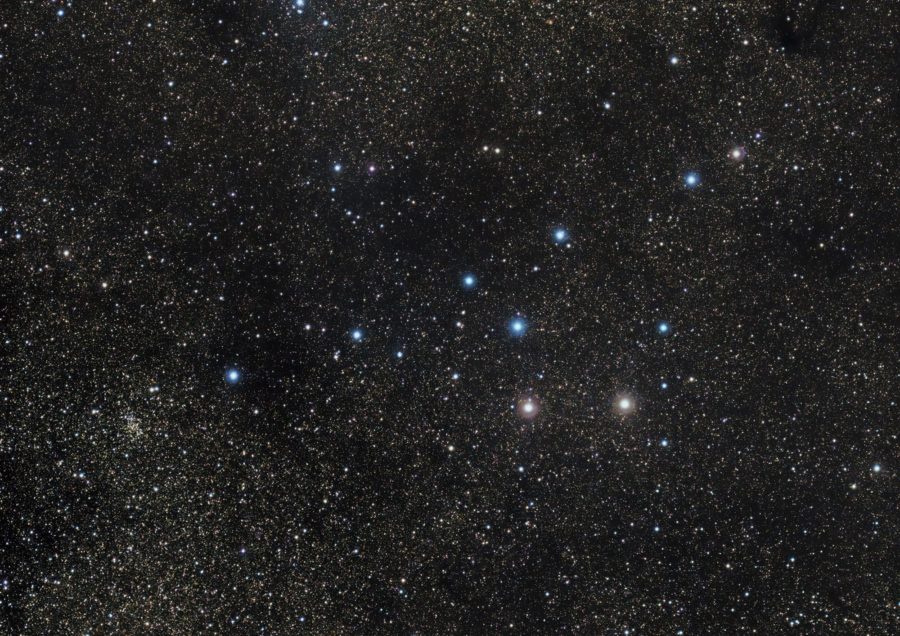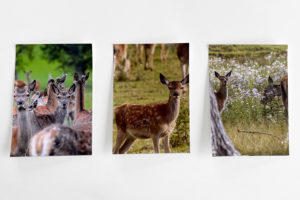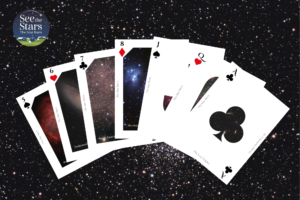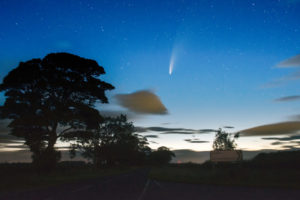Clear September evenings in Northumberland bring stunning views of the night sky. The brightest stretches of the northern Milky Way are on full view. Running from the northeast, overhead and down into the southwest – you don’t need a telescope to appreciate our home galaxy!

Above: Looking south around 8pm in mid-September. The position of the moon changes from night to night. The moon is close to Saturn on the evenings of 16/17 September. Image generated on Stellarium (https://stellarium.org/)
Three of the brightest stars in the sky form a pattern nicknamed the Summer Triangle. The brightest star in the Summer Triangle is overhead after dark and is called Vega. To the left of Vega is a slightly fainter star named Deneb. To the south of these two – about half-way up the sky – is the third star in the Triangle, named Altair. The Milky Way runs through the middle of the Summer Triangle. Take a look at the photo taken from Ingram! Sweeping through the Summer Triangle with binoculars will resolve the Milky Way into countless stars and numerous star clusters. Long exposure photos bring out the pink/red clouds of hot hydrogen gas signifying the birth and death of stars.
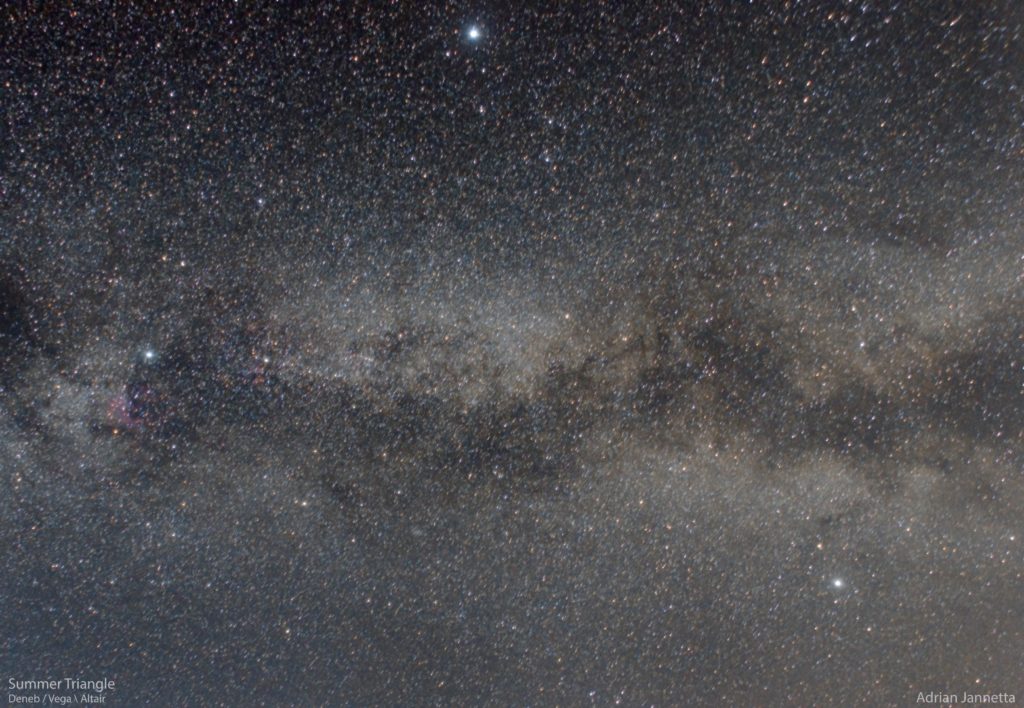
Above: The Summer Triangle and Milky Way. The bright stars from left to right are Deneb, Vega and Altair. The dark dust clouds divide the Milky Way into two streams. This feature is known as the Cygnus Rift, and it is easy to spot from dark locations like Ingram. Taken with a DSLR on a tracking mount from Ingram, Northumberland by Adrian Jannetta.
If you’re new to stargazing and fancy a challenge – why not try to find the celestial Coathanger? This group of stars appears as a fuzzy patch to the naked eye in the middle of the Summer Triangle. Binoculars show a view like the picture below. The cluster was first recorded by the Persian astronomer Al-Sufi in the 10th century and again in the 17th century by Italian astronomer G.B. Hodierna. It’s tempting to think these stars are genuinely part of the same group travelling through the Milky Way together. In the 1990s astronomers ascertained that this a random group of stars at vastly different distances. Such unrelated stars in patterns like this are called asterisms. The celebrated pattern of seven stars forming The Plough is a good example, as is the Summer Triangle mentioned already.
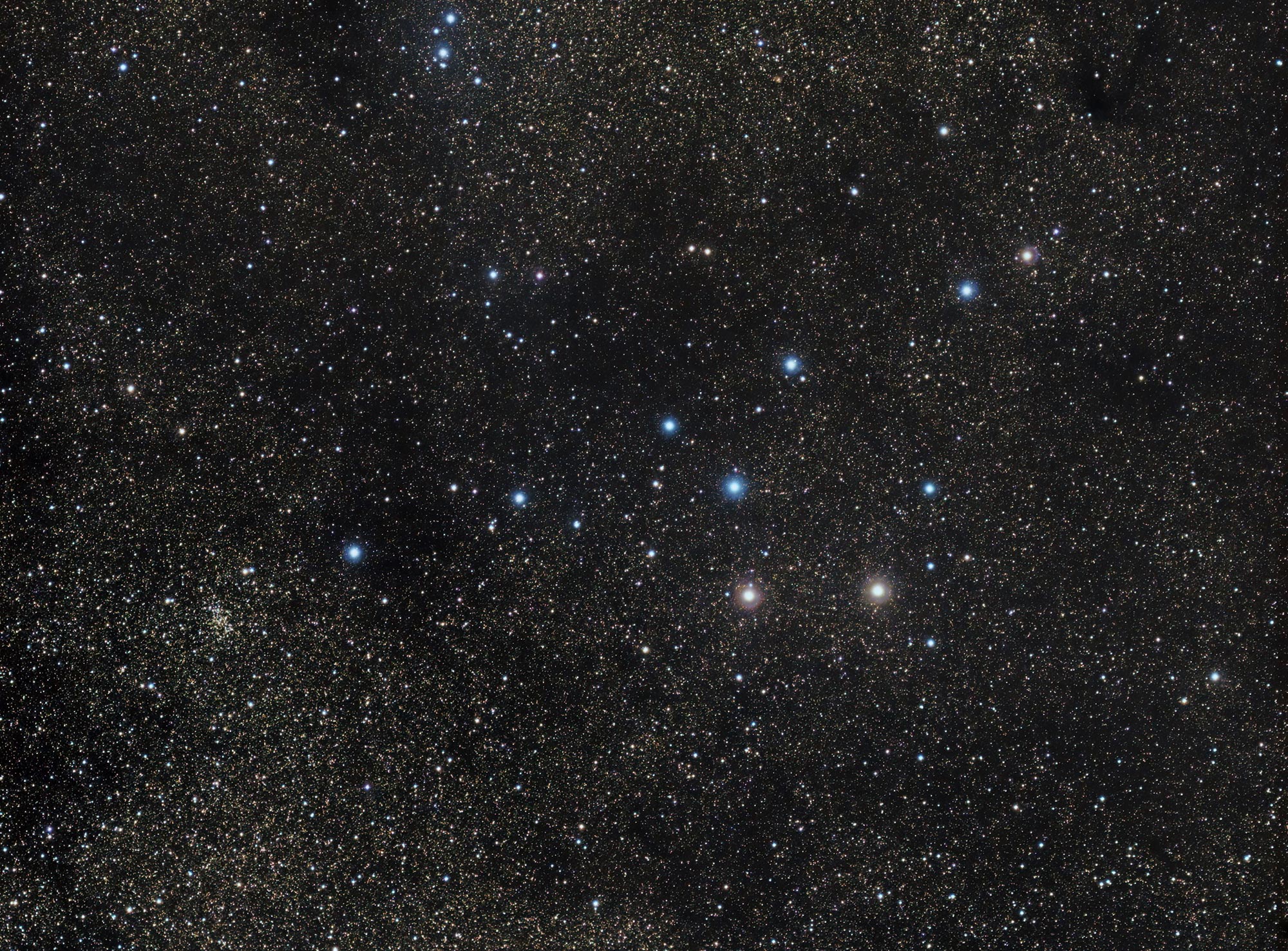
Above: The Coathanger Cluster (also known as Brocchi’s Cluster). Taken with a RedCat 51 telescope and ZWO ASI533MC Pro camera by Adrian Jannetta.
The planet Saturn can be found over the southeastern horizon after dark and rising high into the southern sky around midnight. Saturn reaches opposition on September 8th among the stars of Aquarius. Opposition is the best time to view a planet. At opposition planets are closest to Earth and on the opposite side of the sky to the Sun, meaning they are visible for most of the night.
Saturn is often celebrated as the “jewel of the solar system” due to its stunning and intricate ring system. First observed by Galileo Galilei in 1610 using a primitive telescope, Saturn’s rings puzzled him, appearing as “ears” or “handles” rather than the distinct rings we know today. It wasn’t until Christiaan Huygens, using a more advanced telescope in 1655, correctly identified these “ears” as a flat, circular ring encircling the planet. Huygens also discovered Titan, the largest moon of Saturn. As of 2024 Saturn is known to have at least 146 moons.
One final thing to look out for. In the early hours of September 18th there’ll be a partial lunar eclipse. The full moon will pass through the southern part of Earth’s shadow. The picture shows the middle of the eclipse, at 3.43am, when a small bite has been taken from the full moon!
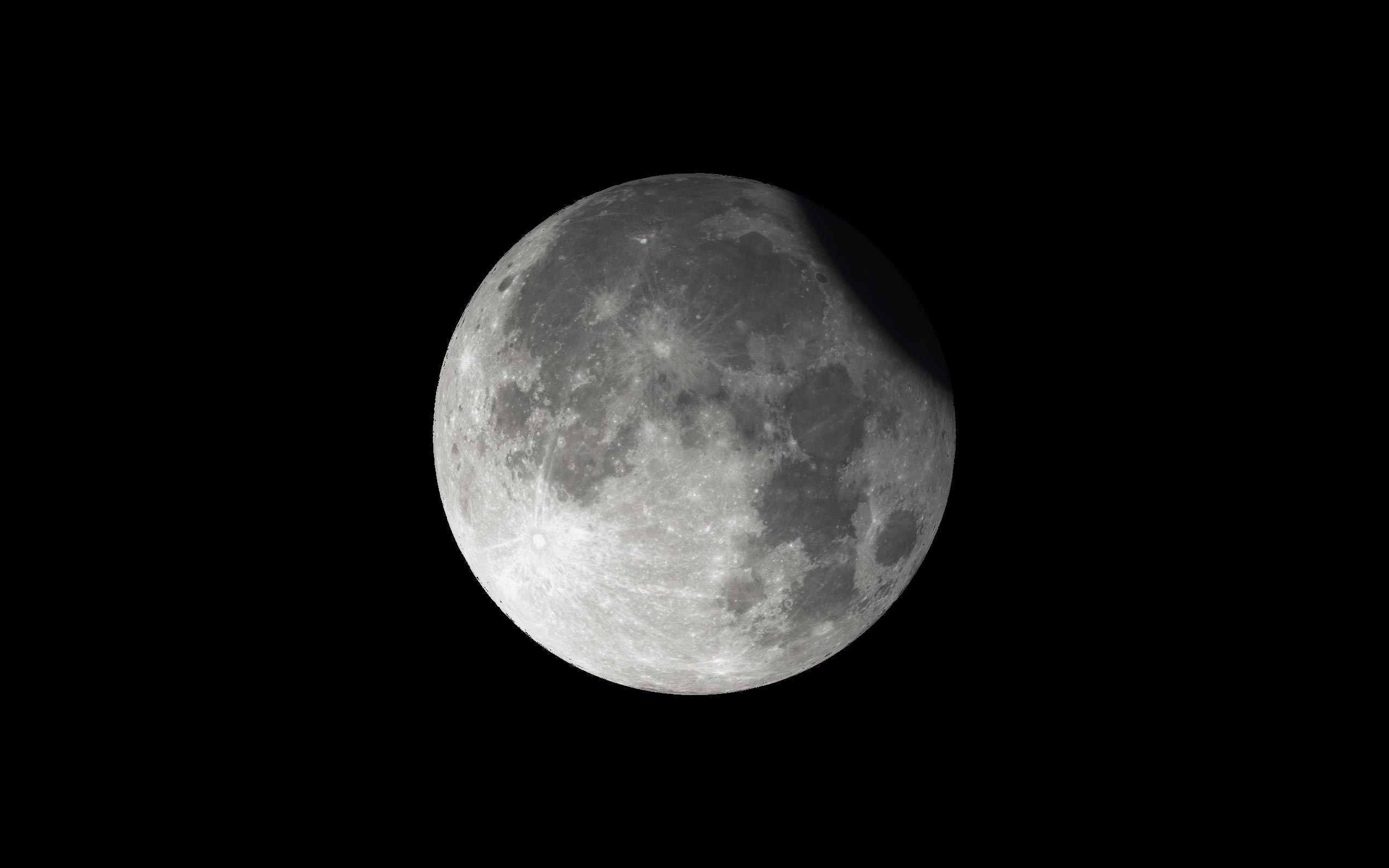
Above: Middle of the lunar eclipse (3.44am on 18-Sep-2024). Image generated on Stellarium (https://stellarium.org/)
The eclipse really begins at 1.39am but the amount of darkening will be unnoticeable until the moon dips into the darker part of the shadow (the umbra) at around 3.10am. The whole show is done when the moon leaves the umbral shadow just after 4.15am. The moon will be in the western sky during the eclipse, and you might notice the planet Saturn, shining brightly below the moon.
The next opportunity to see a lunar eclipse from the UK after this will be March 14th 2025.
That’s it for now! Next time – I’ll update you on a potentially bright comet expected to be visible in the evening sky during October.
Wishing you clear skies!
Adrian

